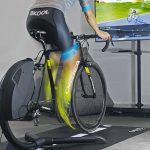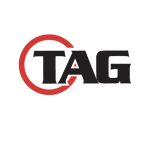Nautilus Inc., the parent of Bowflex, slashed its loss in the fiscal first quarter ended June 30 due to an uptick in gross margins and a steep reduction in expenses with the year-ago period including a $27.0 million asset impairment charge. Sales were down 23.8 percent with a decline of 17.5 percent in the Direct segment and 29.0 percent in the Retail segment.
The company reaffirmed its FY24 guidance, expecting significant year-over-year improvement in the adjusted EBITDA loss. Members of its JRNY digital fitness platform reached 535,000 at the quarter’s end, up 48 percent versus the same period a year ago. The company’s brand family also includes Nautilus and the Schwinn fitness products range.
“Driven by our operational and supply chain efforts and cost reduction actions, we made progress on our path back to profitability in the first quarter with significant improvement in gross margin and adjusted EBITDA loss,” said Jim Barr, Nautilus, Inc.’s CEO. “We also delivered our seventh consecutive quarter of sequential improvements in our inventory levels, solidified our liquidity position, and strengthened our balance sheet, providing us with the necessary financial flexibility to navigate the volatile retail environment while continuing to execute on our North Star Strategy.”
Barr concluded, “We continue to scale our differentiated digital offering, JRNY, reaching over 535,000 members at the end of the quarter. Continued momentum in our Direct business reflects enhancements we’ve made to our product portfolio in this category. We are excited to further build on our strong portfolio with an exciting new pipeline of products with our new BowFlex visual branding this Fall. With improving profitability, ample liquidity, and traction on our North Star strategy, we feel well positioned to capitalize on the enduring shift to at home fitness over the long term.”
Total Company Results
Fiscal 2024 First Quarter Ended June 30, 2023, compared to June 30, 2022
- Net sales were $41.8 million, compared to $54.8 million, a decline of 23.8 percent versus last year. The sales decline versus last year was driven primarily by lower customer demand.
- Gross profit was $8.6 million, compared to $7.0 million last year, an increase of 24.3 percent versus last year. Gross profit margins were 20.7 percent compared to 12.7 percent last year. The 8.0 ppt increase in gross margins was primarily due to lower landed product costs (+11 ppts), decreased discounting (+2 ppts), favorable logistics overhead absorption (+1 ppt), offset by unfavorable absorption of JRNY COGS (-5 ppts), and increased outbound freight (-1 ppts).
- Operating expenses were $19.2 million compared to $58.1 million last year. The decrease of $39.0 million, or 67.0 percent, was primarily due to a $27.0 million asset impairment charge in fiscal 2023, a $4.3 million decrease in personnel expenses, a $4.0 million lower media spending, $2.1 million decrease in contracted services, $1.3 million decrease in other costs, and $0.7 million in other variable selling, and marketing expenses due to decreased sales, offset by $0.4 million increase in restructuring-related charges. Total advertising expenses were $1.1 million this year versus $5.1 million last year.
- Operating loss was $10.5 million compared to an operating loss of $51.2 million last year, primarily driven by lower operating expenses and higher gross profit.
- Income tax expenses were $0.5 million this year compared to $8.1 million last year. Expenses this quarter are primarily driven by foreign-related taxes and FIN 48 reserves related to an income tax audit. No tax benefit associated with domestic losses was recognized due to the U.S. deferred tax asset valuation allowance position established last year. Income tax expense for the three months ended June 30, 2022, was primarily a result of the U.S. deferred tax asset valuation allowance.
- Loss from continuing operations was $4.9 million, or $0.15 per diluted share, compared to a loss of $60.2 million, or $1.92 per diluted share, last year.
- Net loss was $4.9 million, or $0.15 per diluted share, compared to net loss of $60.2 million, or $1.92 per diluted share, last year.
JRNY Update
- Nautilus continues to enhance and refine existing JRNY features, including its personalized recommendations and differentiated, adaptive workouts.
- As of June 30, 2023, JRNY members reached 537,000, representing approximately 48 percent growth versus the same quarter last year. Of these members, 150,000 were Subscribers, representing approximately 17 percent growth over the same period last year. Nautilus defines JRNY Members as all individuals who have a JRNY account and/or subscription, which includes Subscribers, their respective associated users,and users who consume free content. A Subscriber is a person or household who paid for a subscription, is in a trial or has requested a “pause”‘ to their subscriptions for up to three months.
- Earlier this year, Nautilus introduced the JRNY app with Motion Tracking offering personalized coaching and feedback, automatic rep tracking, form guidance, and adaptive weight targets to all JRNY memberships. Accessible via iOS or Android tablets and mobile devices, the embedded features are available to all JRNY members with their membership and without additional equipment. Leveraging proprietary technology and machine learning from Nautilus’ acquisition of VAY, the features bring enhanced value in the JRNY platform, which Nautilus expects to drive JRNY membership growth. The company has seen early success, as workouts with motion tracking are chosen by consumers twice as frequently as other workouts in the JRNY platform.
- A JRNY Mobile subscription, priced at $11.99 per month or $99 per year, is designed for members who like using a mobile device (phone or tablet) with a compatible BowFlex or Schwinn connectable product.
- A JRNY All-Access subscription, at $19.99 per month or $149 per year, expands a member’s usage to any of its BowFlex built-in touchscreen cardio products.
Segment Results
Fiscal 2024 First Quarter Ended June 30, 2023, compared to June 30, 2022
Direct Segment
- Direct segment sales were $21.8 million, compared to $26.5 million, a decline of 17.5 percent versus last year. The net sales decrease compared to last year was primarily driven by lower customer demand.
- Cardio sales declined 26.9 percent versus last year. Lower cardio sales this quarter versus last year were primarily driven by lower demand for bikes. Strength product sales were relatively flat versus the same period last year.
- Gross profit margin was 16.2 percent versus 17.2 percent last year. The 1.0 ppt decrease in gross margin was primarily driven by: unfavorable absorption of JRNY COGs (-8 ppts), increased discounting (-2 ppts) and higher outbound freight (-2 ppts), offset by lower landed product costs (+7 ppts) and favorable logistics overhead absorption (+3 ppts). Gross profit was $3.5 million, a decrease of 22.6 percent versus the same period in 2022.
- Segment contribution loss was $4.7 million, or 21.6 percent of sales, compared to segment contribution loss of $9.9 million, or 37.4 percent of sales last year. The improvement was primarily driven by decreased media spend and lower operating expenses, partially offset by lower gross profit, as explained above. Advertising expenses were $0.9 million compared to $5.2 million for the same period in 2022.
Retail Segment
- Retail segment sales were $19.5 million, compared to $27.4 million, a decline of 29.0 percent versus last year. Retail segment sales outside the United States and Canada were up 69.1 percent versus last year. The net sales decrease compared to last year was primarily driven by lower demand as retailers work through higher-than-normal inventory levels.
- Cardio sales declined 21.3 percent versus last year. Lower cardio sales this quarter were primarily driven by lower demand for bikes. Strength product sales declined by 34.9 percent versus last year. Lower strength sales this quarter versus last year were primarily driven by lower demand for SelectTech weights.
- Gross profit margin was 24.1 percent versus 5.5 percent last year. The 18.6 ppt increase in gross margin was primarily due to lower landed product costs (+13 ppts) and decreased discounting (+7 ppts), partially offset by unfavorable logistics overhead absorption (-1 ppt). Gross profit was $4.7 million, an increase of 213.2 percent versus last year.
- Segment contribution income was $0.4 million, or 2.0 percent of sales, compared to segment contribution loss of $5.4 million, or 19.7 percent of sales, last year. The improvement was primarily driven by higher gross profit and lower operating expenses.
Balance Sheet and Other Key Highlights as of June 30, 2023
Cash and Liquidity
- Cash, cash equivalents, and restricted cash were $18.3 million, flat compared to March 31, 2023. This was primarily due to net proceeds of $10.1 million from the sale of intellectual property, net proceeds of $4.6 million from an equity raise, net proceeds of $2.2 million from the sale of Vi Labs, offset by $12.9 million in payments on long term debt, $2.4 million in cash used in operating activities, $1.2 million for capital expenditures, $0.8 million in payments of debt issuance costs and $0.4 million in payments of early termination of debt fees.
- Debt and other borrowings were $15.9 million, a reduction of $12.0 million, compared to $27.9 million as of March 31, 2023.
$9.5 million was available for borrowing under the Wells Fargo Asset Based Lending Revolving Facility (“Facility”) compared to $14.9 million as of March 31, 2023.
Free Cash Flow, defined as net cash used in operating activities minus capital expenditures, was an outflow of $3.5 million for the three-month period ended June 30, 2023, compared to an outflow of $9.4 million for the same period last year. - Inventory was $39.8 million, down 15 percent compared to $46.6 million as of March 31, 2023, and down 62 percent versus the same quarter last year. The year-over-year decrease in inventory was driven by sell-through and strong inventory management as the company continued to right-size inventory levels. About 9 percent of inventory as of June 30, 2023, was in transit.
- Trade receivables were $13.2 million, compared to $21.5 million as of March 31, 2023. The decrease in trade receivables was due to lower sales volumes driven by seasonality.
- Trade payables were $20.5 million, compared to $29.4 million as of March 31, 2023. The decrease in trade payables was primarily due to lower operating expense accruals due to seasonality and cost-cutting actions taken in Q4 FY23.
- Capital expenditures totaled $1.2 million for the three months ended June 30, 2023.
Full Year Fiscal 2024
Nautilus is reiterating its full-year fiscal 2024 guidance as follows:
- The company expects full-year net revenue to be in the range of $270 million to $300 million, with the second half of the year representing 60 percent to 65 percent of full-year net revenue;
- Given the sale of the Nautilus Brand, the company expects full-year royalty revenue to be $1.8 million;
- The company expects full-year adjusted EBITDA of between $15 million loss to break even; and
- The company is targeting JRNY Members to be approximately 625,000 at March 31, 2024.















